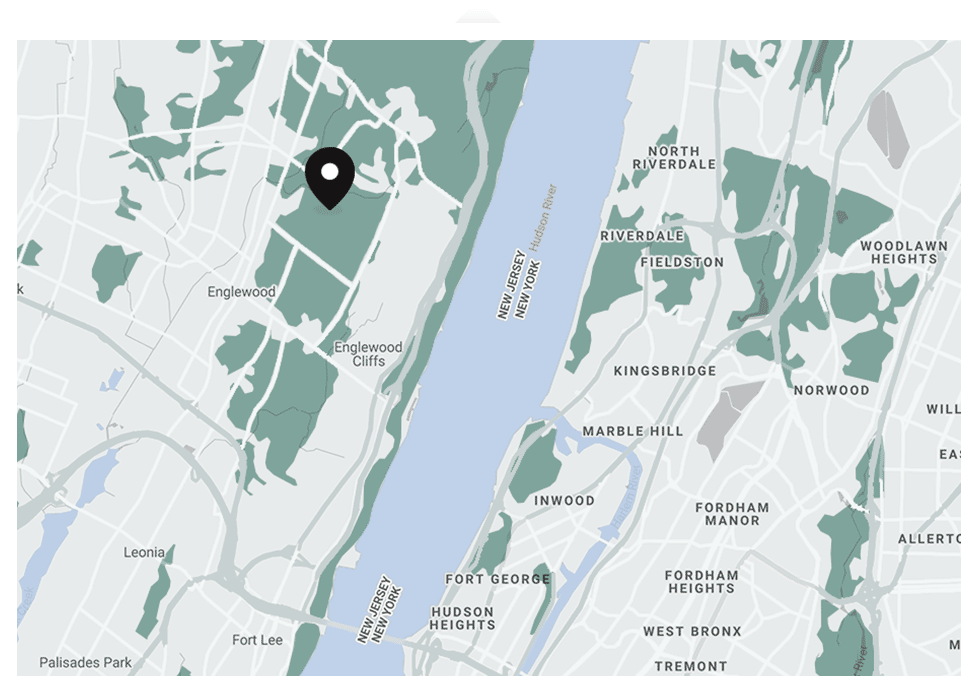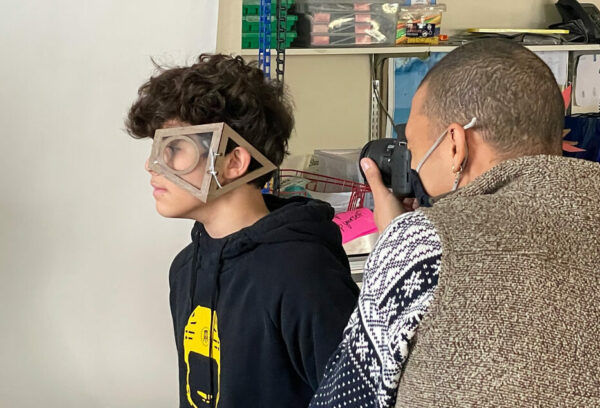Cultivating creativity and innovation in our students
By Laura Adams Stiansen; originally published in the Winter 2022 edition of “Apple Tree Magazine”
The Elisabeth Morrow School has always been at the forefront of new ideas in education, consistently reimagining curriculum to remain fresh and engaging.
Our students learn from teachers and projects that are wholly unique to EMS, with the continuing goal of developing our students into the curious scholars, ethical leaders, and global citizens of the future; our families expect nothing less and we are proud to rise to the occasion.
Over the last 10 years, EMS has fully embraced STEAM (science, technology, engineering, the arts, and mathematics) as a method to engage students at the intersection of creativity and achievement. During the start of our 2021–2022 academic school year, we began our partnership with NuVuX, an initiative developed by NuVu to bring design, creativity, and innovation to schools and organizations around the world. Simply browsing the NuVuX site inspires excitement.
A Partnership
Middle School Head Eleni Siderias describes NuVu as a design education organization. “They are leaders in engaging students in real-world problems in a meaningful way, ensuring that the project-based learning is asking real questions and engaging students with real problems,” she says, adding that pre-professional experiences are the cornerstone of what sets Morrow House apart, as they encourage self-discovery and motivate students to achieve. The NuVuX collaboration adds to this by providing access to experts in design and engineering who use urban design, hydroponics, systems design, aeronautics, pneumatics, computational modeling, machine making, prosthetics, and so much more to inspire all of our students to innovate and engage in design thinking in the way in which our future will require of our leaders.
Through this partnership and working with NuVuX Design Education Fellow Ben Johnson, in cooperation with our faculty, we are taking our project-based learning further and asking students to design solutions to problems that are current or relevant.
Imagine if you could harness the energy from your body sweat to charge your watch, your computer, or any electronic device. The Electric Fingers is a bracelet that transfers energy to the fingers after collecting sweat from tablets, and it’s available to everybody. Its main function is to provide a more eco-friendly power source.
Anoushka P. and Avi W.
Creative Process
Students continue practicing design thinking — as taught through all of our grade levels — while learning a different framework based on the iterative design process, a method of problem-solving that uses a non-linear approach to explore multiple ideas.
“It’s not one way of thinking; we want them to think about the different paths that can be taken to arrive at a solution,” Johnson says. “This allows the creativity of students to open up.”
We are piloting the program with our eighth-grade students. This fall, they completed the first sequence, which provided a foundation for understanding the creative process in a collaborative student-directed studio learning model. Each studio begins with an introduction of the studio brief, which provides the overall topic of inquiry and specific parameters within which students will explore their ideas. Then, they hone their skills by brainstorming, developing a prototype, and communicating their ideas through hands-on projects. This winter, students will advance their skill-building in prototyping, using computer-aided design modeling, 3D printing, and Arduino electronics to make interactive kinetic sculptures. In the spring, students will focus on real-world problem solving through working with local community partners. This will involve a user-specific design experience with students exploring multiple perspectives while maintaining a clear thesis, project goal, and agency over their work.
“This whole process is about trial and error, and what I really love about it is that it basically says that it’s OK to fail. Failure is OK in this because you’ll always come back to it,” says eighth-grader Rohan O., whose project with Chris R. was “an ultra-modern ear implant.” “We spent weeks upon weeks of hard work doing this. From creating our first little sketch on paper to using this amazing laser printer. Those are the opportunities we get to have in this class.”
“I’m grateful I have this equipment to use to my ability and create a product that will try to advance and help people in the future,” adds eighth-grader Cooper R., whose project with Maya A., covered advanced prosthetics and how they are integrated into the human body.
The studio process invites students to explore solutions with an open, imaginative mindset, without being limited by current product trends or technological capacities. Students feel empowered to present their ideas as they are, knowing that this work has the potential to be endlessly iterative. Once a project idea is established, students work through the cycle of sketching, prototyping, and receiving peer and expert feedback to improve their concept and inform their work.
“What the NuVuX program is bringing to EMS is thinking about how we build these capacities through project-based learning,” says Siderais.
People who have low blood sugar are always at risk of having a medical emergency, so we created an external antenna that will convert energy from the sun into glucose a person can use to keep a regular blood sugar level.
Mara G. and Sahil C.
Program Evolution
In the fall, our eighth-graders thought about evolution and what it means to be human and “beyond” human throughout a unit called “Cyborg Evolution.” “We asked, is it morally OK for humans to be genetically modifying ourselves? How will that affect a community in the future? We thought about taking natural systems and applying them to something that can help or enhance a human being, and about how this process of design can influence how we perceive the future,” says Johnson.
Among the projects were an external antenna that converts energy from the sun into glucose to help regulate blood sugar levels; mechanical gills that enable aquatic experiences to last longer, and electric fingers that power electronic devices with power from the sun.
Up next for our eighth-graders in the winter studio brief is the mechanics of play with applied physics and experimental design. Students will create kinetic sculptures by examining applied physics through the lens of playful interactions and dynamic storytelling. Topics explored through hands-on and mechanical design activities include physics in motion, forces, electricity, and magnetism.
“This opportunity will allow our students time to explore their passions and focus on the issues and topics they are most curious about at this stage in their lives,” says Head of School Dr. Marek Beck. “They will learn critical skills, develop agency, and self-efficacy through this work; the true emphasis is on the design process itself, and not the end-result tangible product. The conceptual framework they develop will equip them to face and overcome difficult challenges they encounter throughout their lives, which is the most valuable aspect.”
Mechanical gills enable human aquatic experiences to last dozens of times longer. By collecting and splitting water with electrolysis, mechanical gills allow humans to breathe underwater far past the limits of an oxygen tank. Mechanical gills sow the seeds for innovation with the intent of colonizing and exploring the ocean.
Zane T. and Jacob F.
SNEAK PEEK: Inside our fifth-grade studio
Johnson worked with our fifth-grade teachers to develop a new interdisciplinary four-week studio that was taught across the entire fifth-grade cohort this winter. The studio, titled “Portals to the Unknown,” was inspired by the novel “Out of My Mind,” a text from the fifth-grade English curriculum read by all of the students.
Students designed communication devices that act as gateways — or portals — to transmit information in the form of feelings, perceptions, experiences, and thoughts to people, animals, or outer space, covering topics in sociology, biology, and astronomy under the umbrella of communication design.
There's No Better Time to Support Your Child's Education
Every time you donate to one of Elisabeth Morrow's dedicated funds, you help enrich the daily experiences of our community on campus. STEAM spaces are improved, library catalogues expanded, scholarships are funded, and teachers are hired. Every day, you can see the impact your generous donations have on campus.


